-
BuildManage
Net Promoter Score®, or NPS®, is both a methodology and metric that measures customer experience and predicts business growth. This proven metric has transformed the business world and that’s why it’s a core measurement of customer experience in GatherUp. The power of one question can help you understand if your current customers are fueling your acquisition of new customers.
In this comprehensive guide, we break down what Net Promoter Score is, how to arrive at the right Net Promoter Score calculation, what it tells you, and how you can use it to improve your business.
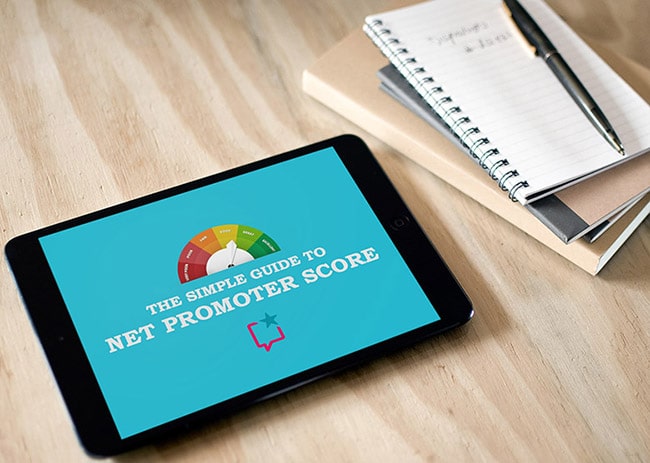
Simply put, NPS is a metric that tells you how your customers feel about your business by asking a simple question. But NPS is more than just a data point. If captured regularly, it is a process and method for improving your business. Without it, if a business was asked what customers think of them, it wouldn’t be a straightforward response or they may simply say something like, “I think my customers like us.” But they wouldn’t really know for sure.
With NPS you can get a much better handle on how customers feel about their experience with your business and how likely they are to tell others about your business. At GatherUp, we like to refer to NPS as your “word of mouth index“. In other words, how likely are your customers to talk about you — and are they saying good things or bad things?
Capturing NPS consistent of surveying your customers with one simple question, “How likely is it that you would recommend our company to a friend or colleague?” The customer answers this question by using a 0-10 point scale, with 10 being very likely to refer you and 0 being not likely at all.
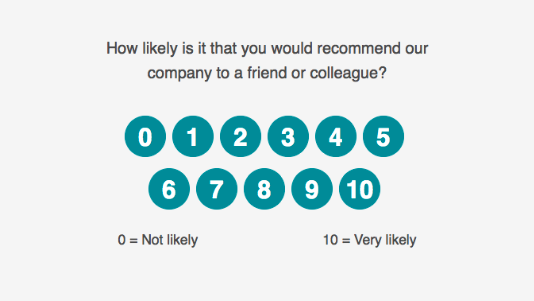
The power of NPS is that it’s easily understood, easy to communicate internally, and informs you of customer happiness, loyalty, and likely referral business headed your way — all with a single number. The Harvard Business Review says this is the one question you need to ask all of your customers and we agree. It’s why NPS is the first question in our feedback process if you use GatherUp to capture reviews and customer feedback. But research we’ve conducted shows less than a third of businesses capture NPS as part of their reviews and reputation management.

Understanding NPS gets a little tougher when you start to look at how the Net Promoter Score is calculated. That’s because you don’t just calculate a simple average from the 0-10 scale question that’s used in the NPS score calculation.
Your NPS = % promoters – % detractors
The NPS formula divides your customers’ answers into three categories and then subtracts just one category from another, leaving one category out entirely. See … that just sounds confusing.
So let’s simplify it by looking at each category and what they tell us about the customers that fall into them.
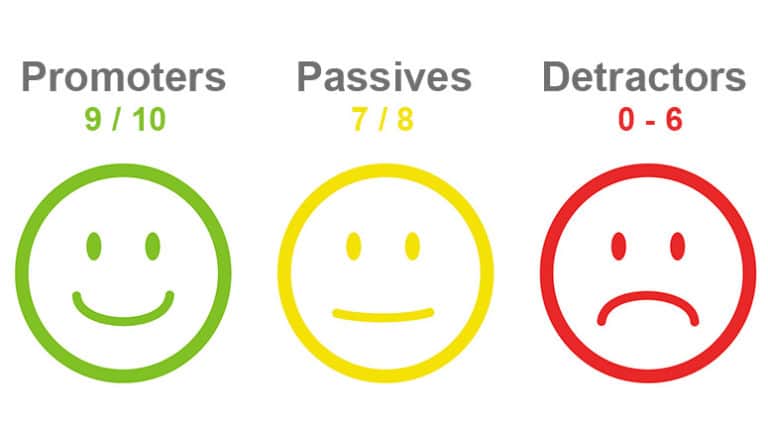
Promoters are the customers who have rated you a 9 or 10 on the NPS question. As the category name implies, these are your customers who will promote your business by telling others they should buy from you.
In real life, this is a customer so happy they might even tell others about your business when they haven’t even been asked about you, your service, or your product. They are often referred to as your brand advocates. Remember when your neighbor walked into the last neighborhood pool party and started telling everyone about the company that just painted his house? He raved about how they were affordable, meticulous, and so easy to deal with.
That’s a promoter.
Passives are the customers that have rated you a 7 or an 8 on the NPS question. Perhaps your business met their expectations, but it didn’t “wow” them. They have nothing awful to say about you, but they aren’t confident they want to vouch for your business by telling others.
In real life, you might be talking to a co-worker who tells you about the resort she just stayed at on vacation. When you asked how the place was, she said “it was fine, nothing great, nothing bad … I might try another place next time.” The business captured her money once and might again, but likely won’t do business with any of their friends from a referral.
Pro Tip: As you’ll learn in a bit, this category is left OUT of the NPS formula. But do not skip over this group of customers. Analyze this group and work to figure out how you can move some of them up to being a promoter to grow your business. Just as important is making sure these “passives” do not dip down into the next category we’ll look at.
You can’t please everyone, but you can and should try to develop more fans of your business.
Detractors are the customers that rated you somewhere between a 0 to 6. In your customers’ eyes, you fell short, maybe by a few inches and maybe even by a mile if they gave you a zero or one. This category is the opposite of a promoter as instead of singing your praises, they might be telling their friends, neighbors, and co-workers to avoid you at all costs.
In real life, you meet up with your best friend for a beer and after small talk, she asks you if she told you about her current real estate agent. She goes on a 10-minute rant on how her realtor never takes her calls, only follows up days later, and then messes up some paperwork that causes major headaches for her.
She’s not going to use or refer that realtor to anyone and you won’t use them either. You won’t be the only one she tells this story to. Detractors are exactly that, they are taking business from you.
Now that you know what the three categories of customers NPS entails, it’s time to understand the Net Promoter Score Calculation.
Let’s look at how to calculate your NPS. It’s very simple. You take the % of promoters minus the % of detractors. That’s it, passives are left out. The answer is your NPS … but the formula produces a number on a scale from -100 to 100, a 200-point scale.
Here is a visual of the formula.

That part gets confusing as we all have been trained to think on a 100-point scale from our school days. 75% in many high school and college classes will get you a C, but in the NPS score range, an NPS score of 75 is great (like an A-). Below is an example of 100 customers answering the Net Promoter Score question and how their results factored into what the NPS score is for that business.
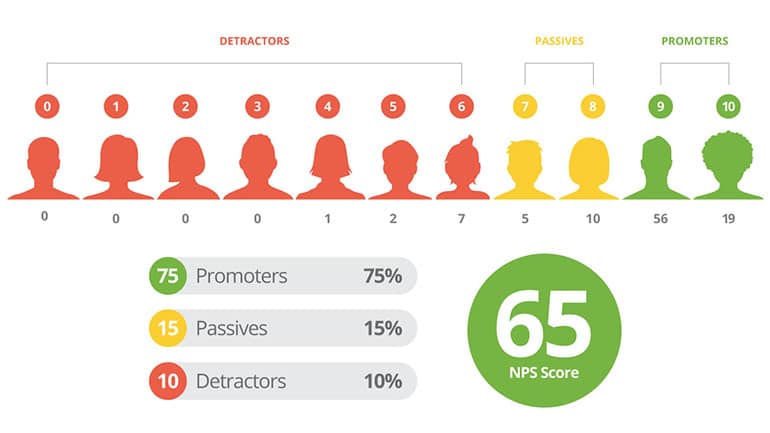
Once you calculate your NPS and get your score, here is a basic interpretation of the score. Keep in mind all industries have varying versions of what these ranges are, but this is a simple guide for you.
The simple explanation: Net Promoter Score is calculated by subtracting the percentage of your disappointed customers from the percentage of your super happy customers. The results of this formula help you understand how likely you are to grow because you understand how likely customers are to tell others to buy from you. Again, in one simple number. Hopefully, by now you’re realizing just how powerful a Net Promoter Score is.
Net Promoter Score informs you of so many important aspects of your business. A few ways you can use your NPS:
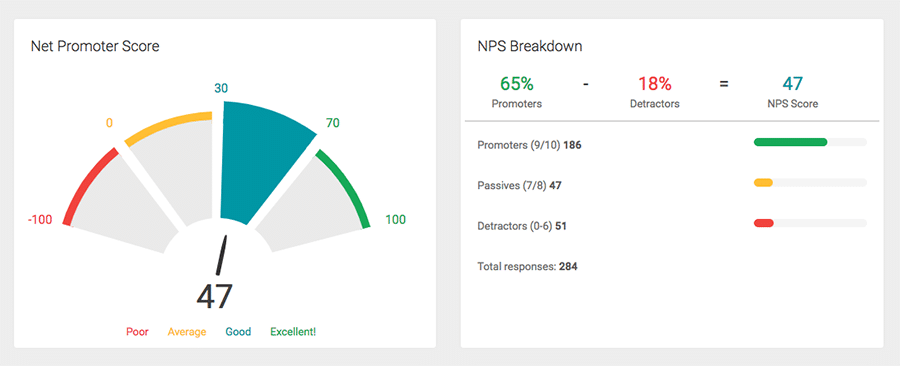
Capturing, tracking, and using an NPS survey can be a huge game-changer. While many businesses are willing to fly blind with what their customers think, NPS can help give you an advantage in understanding your customer’s loyalty and willingness to refer you. If you are a multi-location or franchise business, NPS is a fantastic way to track the performance of each location in your company. You can glean location-level insights while still measuring your NPS at a brand level. If you are a small business, you can utilize NPS to track your word-of-mouth marketing power.
Any business will benefit from the simplicity of NPS to capture, benchmark, and communicate with your staff so you can constantly improve, grow, and succeed.
Want to learn more about Net Promoter Score? Check out our additional NPS resources below:
Bring the value of Net Promoter Score to your business using GatherUp. Quickly and easily get your Net Promoter Score calculation and understand your “word of mouth” sentiment with a simple, reputation management tool.